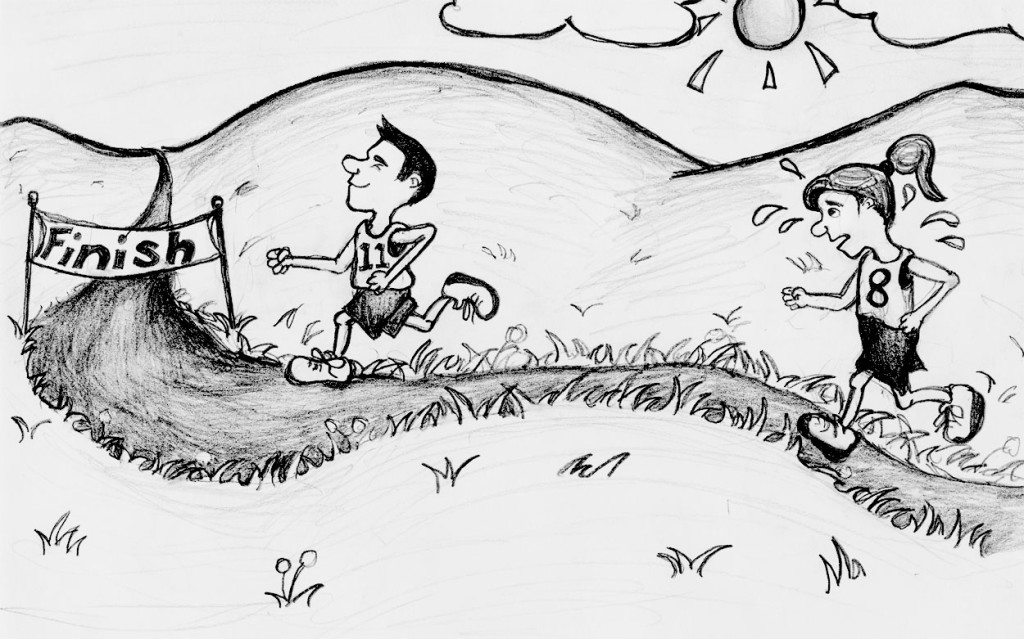
Have you ever held a men’s basketball next to a women’s ball? Sure, they are both orange with black lines and covered in what looks like little goose bumps, but the women’s ball is almost a full inch smaller than the men’s ball. This is because the average man’s hand is generally bigger than the average woman’s.
These accommodations are made in sports to account for physical differences between males and females. Yes, there are exceptions. But if the average male teenager stood next to the average female of the same age, the male would be about five inches taller, according to the Center for Disease Control and Prevention. Why is it, then, that some physical education classes subject boys and girls to the same regulations and standards when we are placed in co-ed physical education classes?
IHSA sports do not have the same state competitor qualifications for boys as they do for girls in individual sports, nor do they have the same standard equipment for each gender or rules as far as contact sports are concerned. In gymnastics, for example, girls and boys compete in different events based on their strengths. Men have such events as parallel bars and rings while women compete on balance beam and uneven bars. Also, such standard equipment including water polo balls and the height of the volleyball net vary in size between girls and boys.
Despite the fact that the world of organized competition has accepted the differences between the sexes, some gym classes still expect the same performance from the girls as they do from the boys.
For physical education teachers who insist on grading a timed run or swim based on number of laps rather than effort, boys and girls should have different requirements. Our points should not be scored on the same rubric because we are not the same.
A study conducted by the organization USA Swimming and Joel Stager, professor in the School of Health, Physical Education and Recreation at Indiana University at Bloomington, proved that, while males and females may perform similarly as children, the men began to swim faster around age 13. Stager hypothesized that puberty, when men generally grow taller and become more muscled, is the main factor behind why the men were able to swim faster than women. Because of the proven discrepancies, the rules should change so that girls have to run fewer laps than boys, just as the rules are changed for regulated sports competitions. Or better yet, not grade based on number of laps at all.
Some classes, such as physical management, have taken an alternative approach to timed running by grading based on effort, rather than performance. This does not cause gender bias in the grading system and would level the playing field.
This should not cause an uproar from those looking for equality in the physical education system because the fact of the matter is the genders are treated differently from the very beginning.
Freshman year, the boys and girls are more separated in gym class than at a middle school dance, and it is clear that our system is not gender neutral. For example, while the boys compete in wrestling, the girls participate in a dance unit. Changing the requirements for the 12 minute run would not affect the preexisting bias of the physical education classes.
Lowering the number of running laps required to pass an assignment is not a bad thing. It is, in reality, an understandable reaction to studies that the world now accepts as fact. Studies that show that the average male teenager will be faster and stronger than his female counterpart. If the world of organized sports, such as the IHSA, has accepted this by having different standards for different genders, then our school should not hesitate to conform to the same standards.


